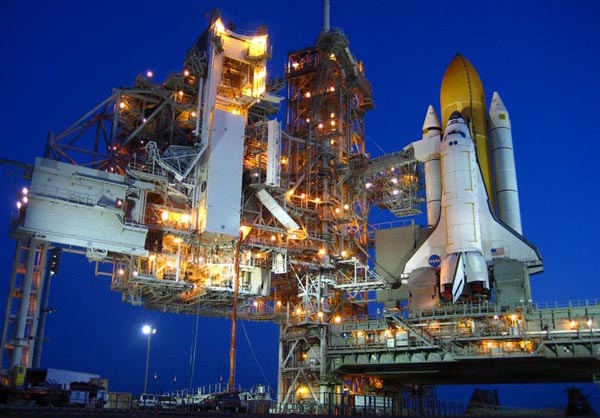
In September 1976 the first Space Shuttle, Enterprise, was unveiled by NASA.
Construction in the Enterprise began on the first orbiter on June 4, 1974 Designated OV-101, it was originally planned to be named Constitution. However, a write-in campaign caused it to be renamed after the Starship Enterprise, featured on the television show Star Trek. On September 17, 1976, Enterprise was rolled out of Rockwell’s plant at Palmdale, California.
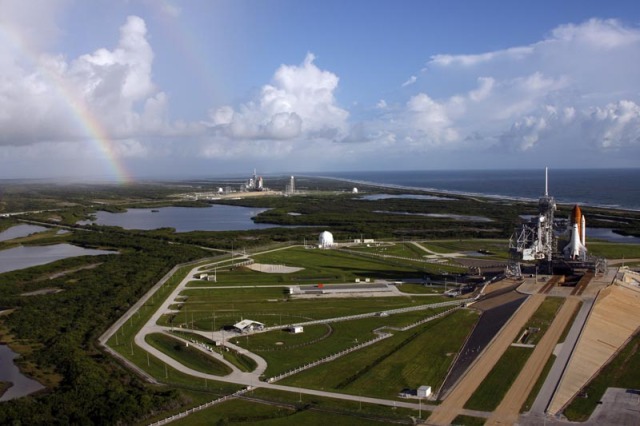
Beautiful view of the Space Shuttle Atlantis, Endeavor and the Kennedy Space Center grounds.
The Space Shuttle is the first orbital spacecraft designed for reusability. It carries payloads to low Earth orbit, provides crew rotation for the International Space Station (ISS), and performs servicing missions. The orbiter can also recover satellites and other payloads from orbit and return them to Earth. Each Shuttle was designed for a projected lifespan of 100 launches or 10 years’ operational life, although this was later extended.
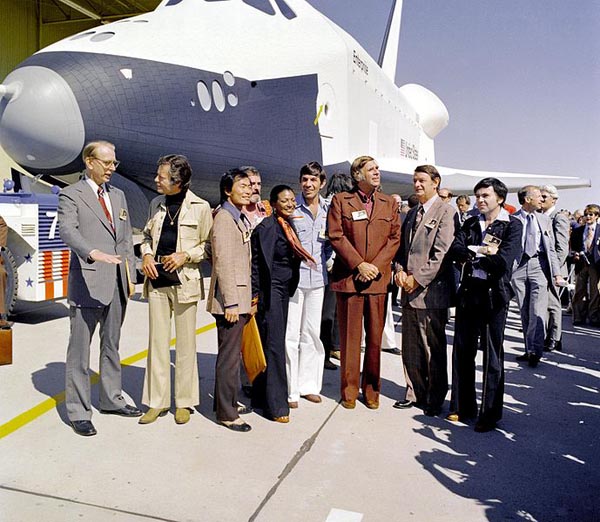
On September 17, 1976, Enterprise was rolled out of Rockwell's plant at Palmdale, California. In recognition of its fictional namesake, Star Trek creator Gene Roddenberry and most of the cast of the original series of Star Trek were on hand at the dedication ceremony.
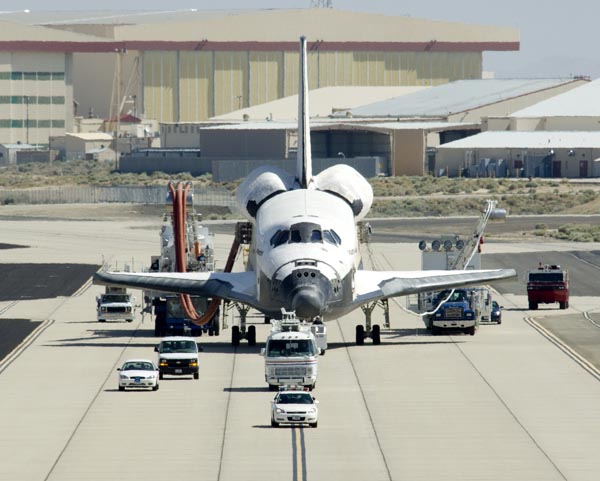
It's size is put into perspective
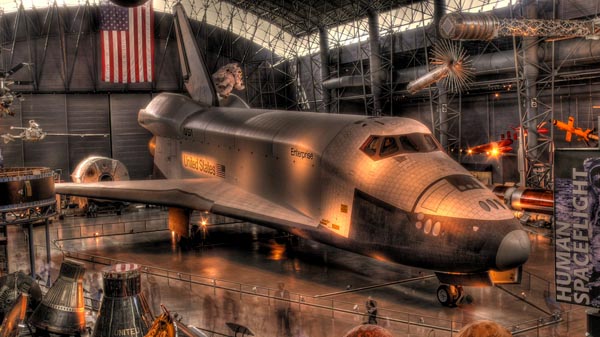
Enterprise was stored at the Smithsonian's hangar at Washington Dulles International Airport before it was restored and moved to the newly built Smithsonian's National Air and Space Museum's Steven F. Udvar-Hazy Center at Dulles International Airport, where it is the centerpiece of the space collection.
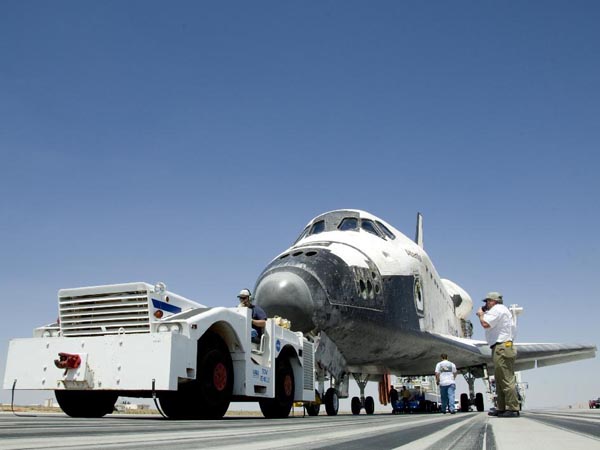
Ground crews begin towing Space Shuttle Atlantis from the main runway at Edwards Air Force Base following its landing May 24, 2009, which concluded the STS-125 mission to upgrade the Hubble Space Telescope. (http://www.nasa.gov)
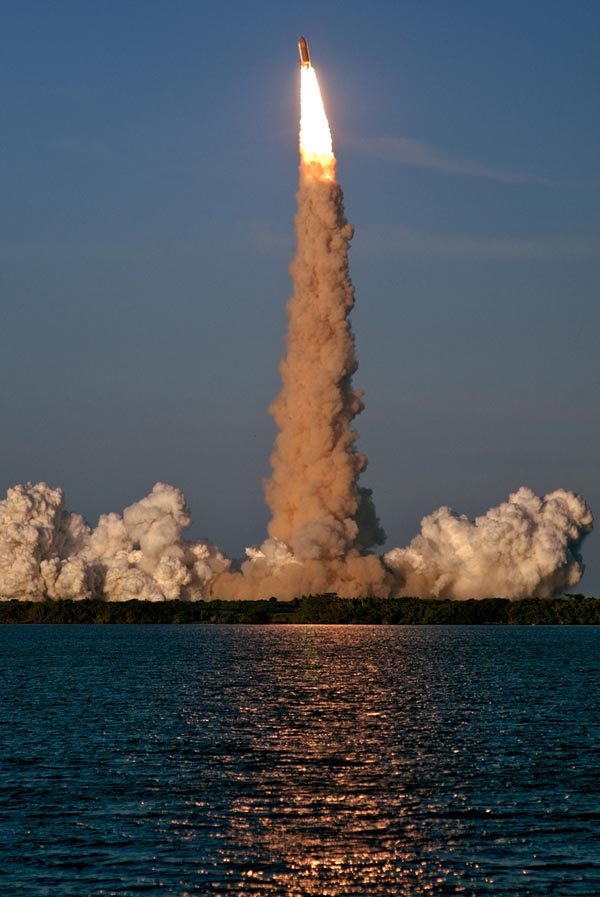
Lift Off!
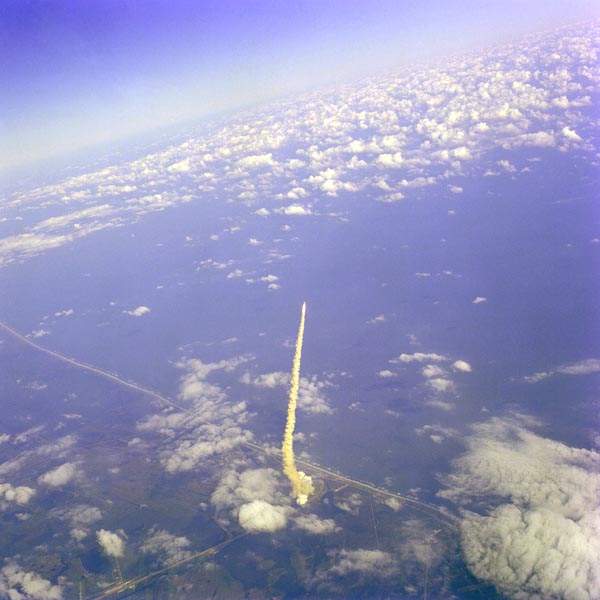
A view of lift off from 35,000 feet
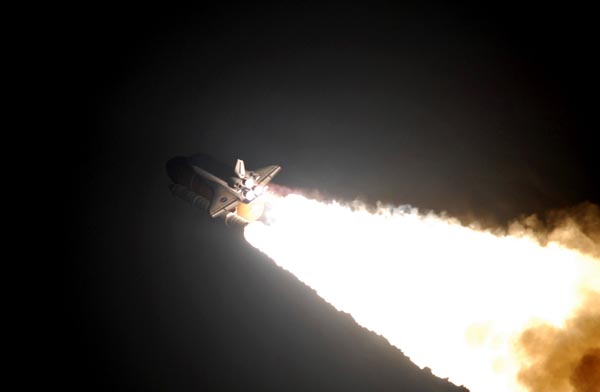
In this stunning picture following the launch, the glare from Endeavour's three main rocket engines and flanking solid fuel booster rockets illuminates the orbiter's tail section and the large, orange external fuel tank. (http://apod.nasa.gov)
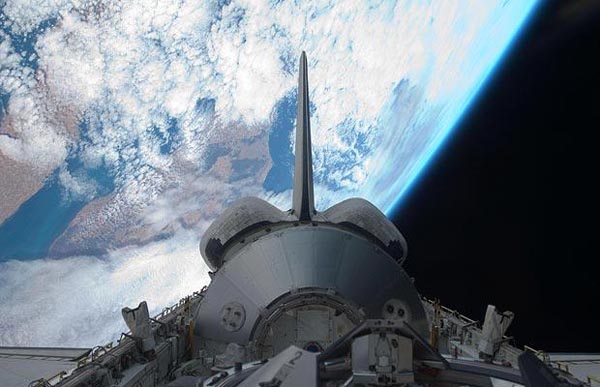
Backdropped by the Earth, the Leonardo Multi-Purpose Logistics Module, a large pressurised container used to transfer cargo to and from the International Space Station, is visible in the shuttle's payload bay. (http://www.telegraph.co.uk)
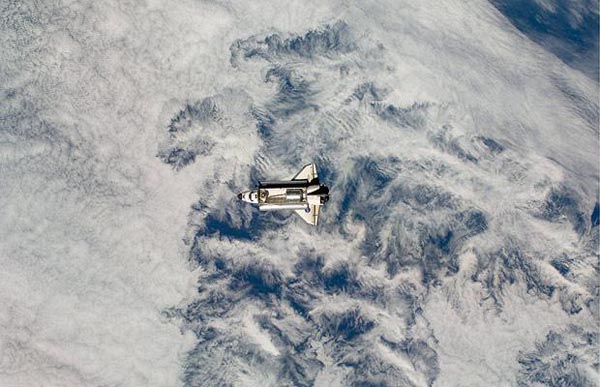
Space Shuttle Endeavour approaches the International Space Station with its cargo bay doors open and the Leonardo Multi-Purpose Logistics Module visible inside the shuttle's cargo bay. (http://www.telegraph.co.uk)
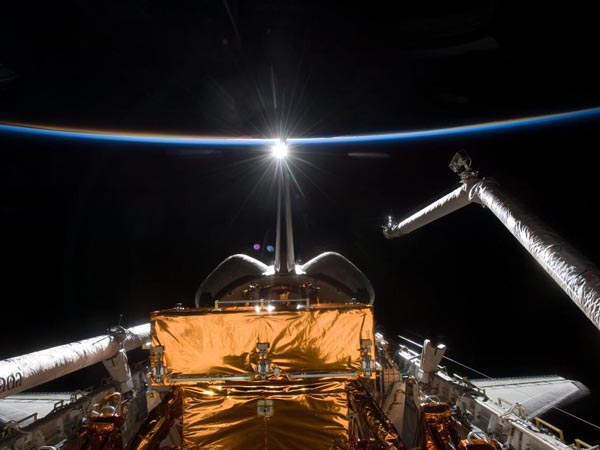
Backdropped by the blackness of space and the thin line of Earth's atmosphere, space shuttle Atlantis' payload bay, Canadian-built remote manipulator system robotic arm, vertical stabilizer and orbital maneuvering system pods are featured in this image photographed by the STS-125 crew on flight day 10. (http://www.nasa.gov)
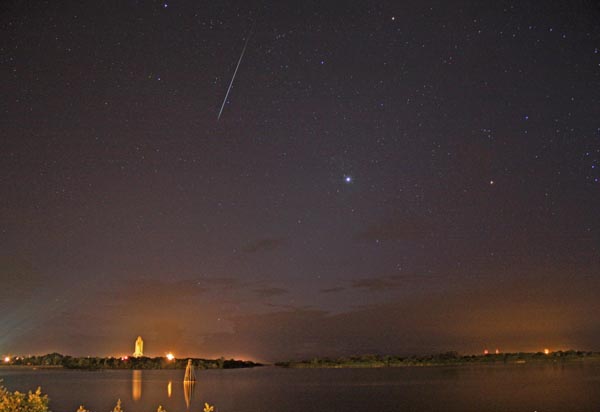
This early morning skyscape was captured last week on August 4th, looking northeast across calm waters in the Turn Basin at NASA's Kennedy Space Center. In a striking contrast in motion, the space shuttle Discovery, mounted on a massive transporter, creeps toward launch pad 39A at less than two miles per hour, while a brilliant meteor streaks through the sky traveling many miles per second. Of course, this week skywatchers have seen many similar meteor streaks during the annual Perseid meteor shower. But the meteor flashing above Discovery is not likely to be one of the Perseids because its path doesn't point back to that shower's radiant. Seen here near picture center, brilliant planet Venus still dominates the sky as the Morning Star, though. Yellowish tinted Mars lies near the top of the frame and Orion's red giant star Betelgeuse is toward the right. (http://www.nasa.gov)

Hi, just wanted to mention, I enjoyed this post. It was inspiring.
Keep on posting!